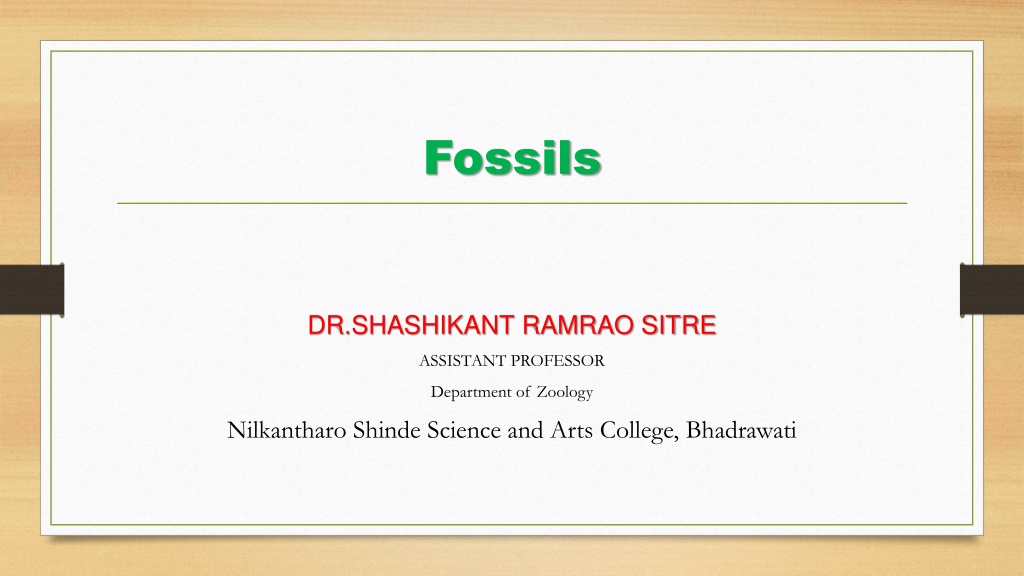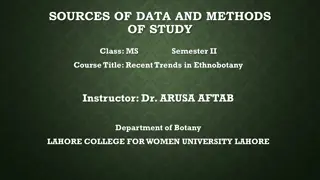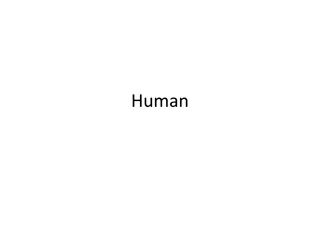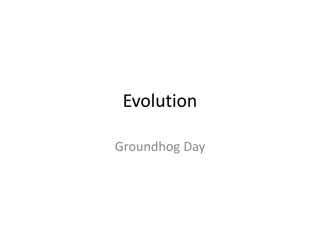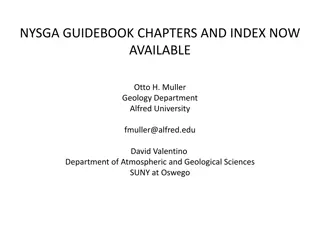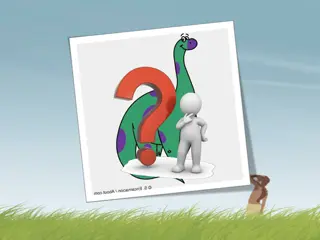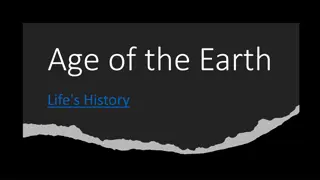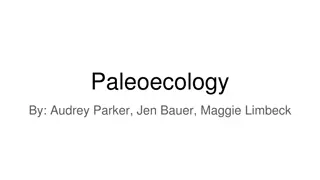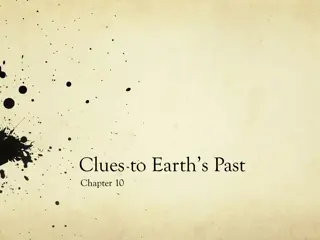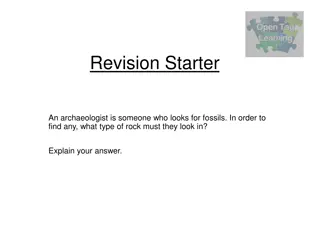Exploring the Fascinating World of Fossils
Dive into the realm of fossils with insights on different types such as body fossils, subfossils, microfossils, macrofossils, and unusual fossils. Discover how these remnants provide a glimpse into the past and help understand ancient life forms.
Download Presentation

Please find below an Image/Link to download the presentation.
The content on the website is provided AS IS for your information and personal use only. It may not be sold, licensed, or shared on other websites without obtaining consent from the author. Download presentation by click this link. If you encounter any issues during the download, it is possible that the publisher has removed the file from their server.
E N D
Presentation Transcript
Fossils DR.SHASHIKANT RAMRAO SITRE ASSISTANT PROFESSOR Department of Zoology Nilkantharo Shinde Science and Arts College, Bhadrawati
Fossils Sir Charles Lyell Fossil can be defined as Any body or traces of body, animal or plant buried and preserved by natural cause .
It means fossil may be an entire organism which got buried in the snow in the remote past, a mold or a cast of the entire organism or its parts or unchanged parts or their replica, foot prints or even the imprint of a leaf on a stone.
Types of Fossils -11 types 1. Body Fossils The fossils of hard parts of an organism such as shell, tooth or bone are called body fossils. These provide details of shape and functions of actual organism. These occur in all shapes and sizes and range from microscopic sea dwellers to huge terrestrial dinosaurs.
2. Subfossils These are remains of animals and plants preserved in rocks less than 10000 years. These also include remains of bison trapped in frozen ice, in peat bogs or of ancient man mummified in caves. Sub fossils were formed during Holocene epoch.
3. Microfossils These are the fossil remains of microscopic animals and plants which are usually less than 0.5 mm in size. However the skeletal deposits of these organisms may assume a diameter of 10 cm. or so.
4. Macrofossils These fossils are larger than 1cm. In size. These include fossils of more advanced plants and animals such as Clams corals or skeleton of vertebrates.
5. Unusual fossils These are formed by the combination of events and conditions which result in all of the organisms getting preserved in rock. The famous deposits of Solenhofen Limestone of Southern Germany and Burgess Shales of Canada contain unusual fossils of 1. Mammoths dug from Siberian waste 2. Remains of archaeopteryx from Solenhofen of Bavaria, Germany.
6. Trace Fossils These are fossils of foot prints and trails left in mud by the organisms that lived in past. e.g Dinosaurs foot prints, worm trails and clam burrows are all trace fossils. It means trace fossils are formed as a result of day to day activities of the organisms such as walking, crawling, burrowing or feeding.
7. Corpulites - These are trace fossils. These are fossils of dropings of animals or faeal matter. These may vary in size from tiny faecal pellets of sea snail to large coprolites of crocodile, dinosaur or a mammals. These are found in association of the animal fossils who made them. The study of fossil excreta may provide valuable information pertaining the food habits of the fossil form.
8. Bioclast These are fossil or fragmets of fossils enclosed in sediments. Here thin sections of fossils under microscope are seen.
9. Burrows and Boring Some animals live in the burrows, tubes and holes in the ground, wood or rocks for shelter or in search of food. The burrows may be later filled with sediments and preserved . They are also regarded as fossils. Several fossil shells and wood have borings made by some or other organisms. Such borings are also considered fossils.
10. Gastroliths These are found in abundance in body cavities of certain reptiles. These structures are believed to have been of some use in grinding the stomach contents of extinct reptiles.
11. Pseudofossils Many objects of inorganic origin closely resemble the forms of organic origin and are found in the sedimentary rocks. These are pseudofossils.
